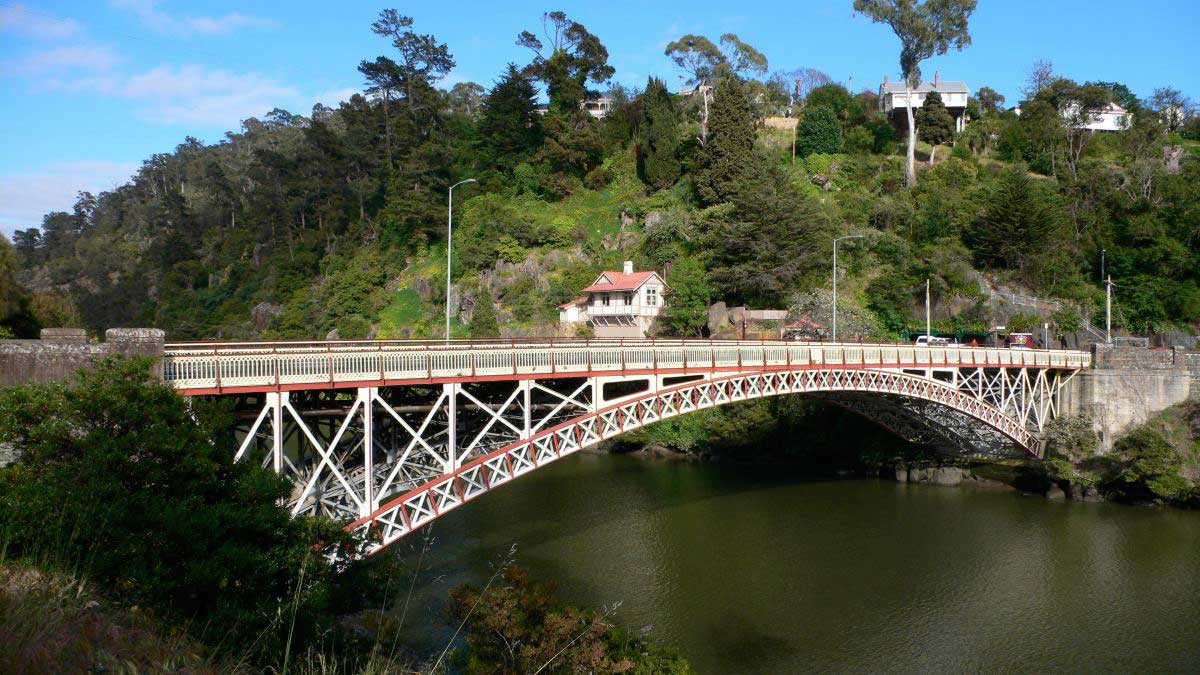








• Search the Australian Heritage Database
• The E. R. Pretyman index to Tasmanian place names
• Companion to Tasmanian History
• Bass Strait Cross-Cultural Relationships
• A history of Salt in Tasmania
• Tasmanian Mining History • Timeline
• Records of Convict Life Online
• Australian convict records: Tasmania
• Van Diemen's Land Founders and Survivors Convicts 1802-1853
• Tracing London Convicts in Britain & Australia, 1780-1925
• Convict Records of Australia
• Records of Tasmanian Aboriginal People Online
• Tasmanian Aboriginals: The Lost Tribe
• A Timeline of Tasmanian Aboriginal History
• Aboriginal Heritage Tasmania
• Launceston and North East Tasmania
• Burnie and North West Tasmania
• 12,000 years ago: Separation of Tasmania
• 1642: First European Encounter With Tasmania

The first reported sighting of Tasmania by a European was on 24 November 1642 by the Dutch explorer Abel Tasman, who named the island Anthoonij van Diemenslandt, after his sponsor, the Governor of the Dutch East Indies. The name was later shortened to Van Diemen's Land by the British. In 1772, a French expedition led by Marc-Joseph Marion du Fresne landed on the island. Captain James Cook also sighted the island in 1777, and numerous other European seafarers made landfalls, adding a colourful array to the names of topographical features.

In the 1950s, the Federal Government agreed to built a number of such vessels to service Tasmania, to be operated by their Australian National Line. The first of these revolutionary new ships was the Newcastle-built motor vessel Princess of Tasmania in 1959. Then the largest roll-on/roll-off ship in the world, to pioneer what became Australia's premier car and passenger ferry service, operating between Tasmania and the mainland.

The transportation of British convicts to Australia came about as a result of the poverty, social injustice, child labour, harsh and dirty living conditions and long working hours that were prevalent in 19th-century Britain. Tasmania was the second colony to be established by the British, in 1803. Tasmania's first penal colony was established at Macquarie Harbour (Sarah Island) on the west coast in 1822.

The probation and assignment systems resulted in convicts making roads, erecting buildings and bridges and working on farms in and around the first townships throughout the colonies. In Tasmania, much of what the convicts created during the transportation years (1818 to 1853) remains, and Tasmania now has the largest collection of convict buildings and infrastructure of all the states.

Most Tasmanian ghost towns are former mining settlements, which were more often than not located in dense rainforest on isolated mountain sides. Extreme weather conditions and the tendancy of rainforests to grow back in cleared areas very quickly, has seen many a mining settlement reclaimed by the bush within a few short years, and all that remains today are foundations of former buildings or remants of a graveyard, a railway or abandoned mining equipment.

No one quite knows why but many people have a fascination for lighthouses. Every photographer has at least one dramatic shot of a lighthouse in his/her collection. Tourists love climbing them, in part for the view but perhaps also because they hold a strange fascination like no other man made structure.

Anglicanism has remained the largest Christian denomination in Tasmania during two centuries of European settlement. For the first half of the nineteenth century the Church of England was treated by government as the colony's official though not 'established' religion. Robert Knopwood, the first colonial chaplain, carried responsibility for the spiritual oversight of the entire colony until 1818.

Sadly rail travel as a means of public transport around Tasmania is long gone - the remaining rail network is used exclusevley for the carriage of freight these days. However a number of history buffs and rail enthusiasts have rescued or revived some of the many historic railway journeys using sections of old line that are no longer connected to the main network.

The names of rivers, coastal features, districts and their streets tell a lot about the history of a place. Australia has plenty of unusual place names, but when it comes to the strange, quirky and sometimes downright rude (by modern meaning of words), Tasmania has it all over the other states.
The reason for that is that much of Tasmania was pioneered by Scottish and Irish migrants. There's nothing unusual about that, except that the ones Tasmania inherited all seem to have had a rather strange sense of humour when it came to naming places. As expected, they splashed plenty of Irish and Scottish place names about, but then they threw some rather colourful, whimsical, odd-ball names into Tasmania's nomenclature pot for good measure.

For a small population base Tasmania has produced a number of significant people in many areas including the actor Errol Flynn, the Crown Princess Mary of Denmark (Mary Donaldson) and Australian cricketer Ricky Ponting.
In the past decade Tasmania's population has grown at a rate faster than France, but the growth is still relatively low compared to other states, according to a recent Deloitte Access Economics report. The population growth is considered an important driver for the improved business and economic outlook in the state. In the past, natural increase has been the state's biggest population driver but it now ranks behind overseas migration and interstate migration. But, like the rest of Australia, Tasmania has an ageing population.
In 2008, interstate migration was a net negative in Tasmania, meaning more people were leaving the state to go to other parts of Australia than moving to it. But the Deloitte's Report recorded a recent reversal of this trend and now interstate migration is the second biggest driver of population growth. However the population increase has put a squeeze on housing and led to complaints about traffic congestion.